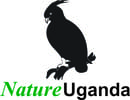Conservation and Restoration of the Murchison Falls-Albert Delta Wetland System
The Murchison Falls-Albert Delta Wetland System is a critical ecological site within Uganda’s Albertine Graben, an area renowned for its rich biodiversity. This Ramsar site serves as a vital breeding ground for indigenous fish species and is home to globally threatened bird species, including the iconic Shoebill Stork and Grey Crowned Crane. It also provides refuge for numerous migratory birds and supports key ecosystems essential for biodiversity, community livelihoods, and the health of freshwater resources.
This initiative is a collaborative effort spearheaded by NatureUganda in partnership with TotalEnergies EP Uganda B.V. (TEPU) under the Tilenga Project. The project is located within a landscape encompassing the Murchison Falls National Park, savanna protected areas, and critical wetlands, including the Budongo-Bugoma Forest Corridor.
The Tilenga Project, situated in one of Uganda’s biodiversity hotspots, is bound by Ugandan laws and international conventions to ensure a Net Gain/No Net Loss (NGIP) in biodiversity, ecosystems, and community livelihoods. The NGIP targets include increasing the extent and quality of wetland habitats within the Murchison Falls Conservation Area and enhancing freshwater quality along the Nile River and Lake Albert by the year 2045.
Despite its ecological significance, the Murchison Falls-Albert Delta Wetland System faces several threats including human wildlife conflicts, poaching, commercial and subsistence hunting of bushmeat, encroachment because of unclear boundaries for subsistence agriculture, the rising human populations in the landscape among others (Tshombe, 2021). The developments of oil and gas exploration and production, as well as infrastructure associated with oil and gas industry is a new challenge. Many small-scale farmers do not have permits to use the wetlands and are regarded as wetland encroachers (Kalanzi, 2015). Without permits to use the wetlands, the communities have no incentive or willingness to invest their resources into good management practices that reduce the risk of degradation of wetlands and the impacts of climate change and development of Oil and Gas activities.
Objectives
The Conservation and Restoration of the Murchison Falls-Albert Delta Wetland System Project seeks to address these challenges through targeted interventions. The overall goal is to conserve and restore the wetland system while building local capacity for sustainable land management practices. Specific objectives include:
Guiding the restoration and management of the Ramsar site.
Empowering local communities to engage in environmentally sustainable practices.
Enhancing biodiversity, ecosystem health, and community resilience against climate change and development impacts.
Through this project, NatureUganda and its partners aim to secure the ecological integrity of this critical wetland system while promoting co-existence between development and conservation.


